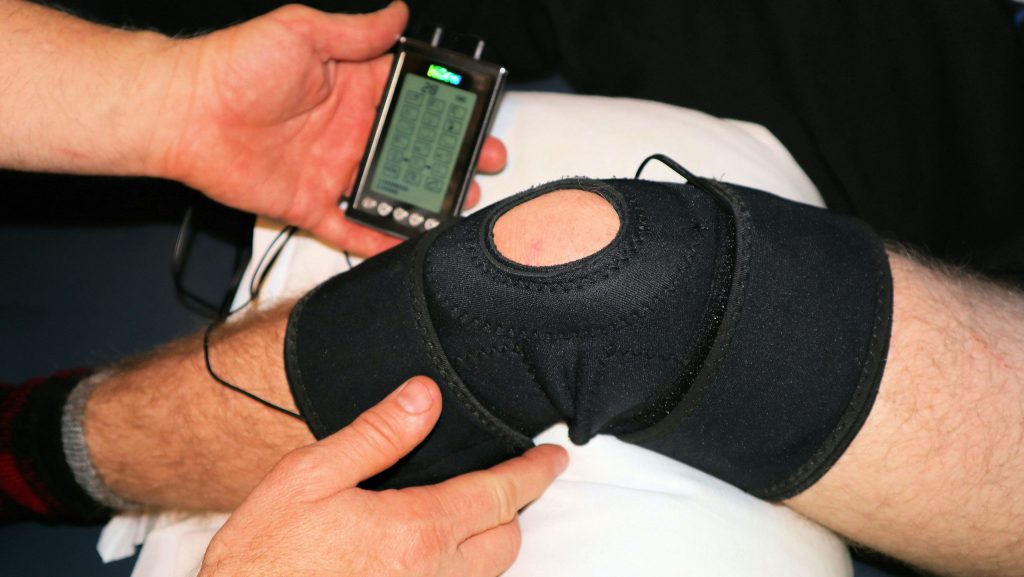Table of Contents
In the field of physical fitness, achieving peak performance requires equal emphasis on recovery as well as strength and endurance training. Gym-based functional recovery workouts are crafted to optimize muscle recovery, elevate fitness levels, and prevent injuries, making them a critical component of any comprehensive fitness program.
“Functional recovery workouts significantly reduce the risk of injuries and enhance fitness longevity by helping the body to restore itself more efficiently after intense activities.”
Functional recovery workouts consist of exercises specifically designed to aid the body in recuperating after strenuous physical activity. Incorporating these exercises into a gym routine is essential for enhancing the body’s ability to recover efficiently and reducing the risk of injuries, thereby promoting longevity in fitness activities.
- Introduction to Functional Recovery Workouts: Explaining what these workouts involve and their significance.
- Designing Your Recovery Routine: Steps to create a workout that meets individual recovery needs and enhances the recovery process.
- Essential Recovery Exercises: A detailed overview of exercises that should be part of a recovery routine.
- Role of Equipment in Recovery: An examination of tools that can aid in effective recovery.
- Monitoring Progress and Adjustments: Strategies for assessing the effectiveness of a recovery routine and when to modify it for better results.
Recovery workouts serve to complement high-intensity training by focusing on the care of the body’s musculoskeletal system. This includes muscle repair and strengthening of connective tissues, which not only aids in immediate recovery but also prepares the body for future training sessions, thus reducing the likelihood of injuries commonly associated with weightlifting and high-impact exercises.

Introduction to Functional Recovery Workouts
Functional recovery workouts are essential for maintaining both fitness and health, serving as a necessary complement to intense physical training. These workouts are strategically designed to facilitate muscle repair and enhance physical resilience, allowing individuals to continue their fitness activities reliably and safely.
Definition of Functional Recovery
Functional recovery workouts comprise various exercises aimed at aiding the body in recovering from exercise stress. The primary goal is to restore muscle function, enhance flexibility, and alleviate soreness. These workouts generally involve light aerobic activity, stretching, and mobility exercises that help increase blood flow to the muscles, promoting the healing process. By integrating terms such as “functional recovery workouts” and “fitness recovery,” it is evident that these sessions are fundamental to regaining strength and functionality after exertion.
“Functional recovery workouts can reduce exercise-related muscle soreness by up to 40%, significantly enhancing post-workout recovery times.”
Importance in Injury Prevention
Injury prevention is a crucial benefit of functional recovery workouts. Consistent incorporation of these sessions into a fitness routine effectively reduces the risk of common sports-related injuries. By focusing on gym recovery techniques and employing strategies targeted at weak muscle groups, these workouts help balance the body and correct disparities in muscle strength and flexibility. Terms such as “injury prevention” and “gym recovery techniques” highlight the preventive nature of these workouts, which aim to strengthen the body against the strains of more intense exercise forms.
| Benefit | Description |
|---|---|
| Reduces Injury Risk | Balances muscle strength and flexibility |
| Enhances Flexibility | Improves range of motion and reduces stiffness |
| Speeds up Recovery | Increases blood flow, promoting faster healing |
Benefits for Overall Fitness Levels
The advantages of functional recovery workouts extend beyond mere injury prevention; they are critical in enhancing overall fitness levels. Improving muscle recovery through exercises that promote flexibility and muscle conditioning allows individuals to improve their performance during high-intensity workouts. Keywords like “recovery workout benefits” and “muscle repair” emphasize the direct impact of these workouts on an individual’s fitness capacity. Engaging regularly in recovery workouts ensures that muscles are adequately conditioned and prepared for future physical activity, which is vital for long-term fitness success and health.

Designing Your Recovery Routine
Developing a recovery routine is essential for optimizing muscle recovery, minimizing injury risk, and enhancing performance during physical activities. This subtopic provides a detailed guide on how to establish a recovery routine that meets individual fitness needs effectively.
Identifying Personal Recovery Needs
The initial step in creating an effective recovery routine is accurately identifying your specific recovery needs. Individual responses to exercise vary based on several factors including workout intensity, frequency, and the nature of the exercises performed. Recognizing these individual requirements is crucial for crafting a recovery routine that supports and sustains your fitness efforts.
Begin by evaluating your current fitness level and the specific demands of your workout routine. Consider the intensity and duration of your workouts as well as any particular areas that often experience discomfort or are prone to injuries. For those engaged in rigorous activities like high-intensity interval training (HIIT) or substantial weightlifting, recovery needs will be more extensive than those undertaking lighter aerobic activities.
Utilizing fitness trackers and recovery apps can provide insights into how your body responds to workouts. These devices typically track heart rate variability, sleep quality, and activity levels, which are valuable in assessing your recovery needs. Consulting with fitness professionals or physical therapists can also provide customized advice tailored to your fitness goals and physical condition, ensuring your recovery plan is both effective and personalized.
“Studies show that personalized recovery routines can reduce the incidence of common training injuries by up to 30%.”
Exercises for Common Gym-Related Injuries
Including specific exercises aimed at preventing and rehabilitating common gym-related injuries is crucial for an effective recovery routine. These exercises should focus on improving flexibility, strength, and mobility.
For individuals frequently experiencing lower back pain, incorporating core and lower back strengthening exercises, such as planks and bridges, is beneficial. These exercises help stabilize the spine and enhance core strength, contributing to reduced injury risk.
For those susceptible to shoulder injuries, particularly from weightlifting or overhead activities, it’s important to include exercises that enhance shoulder stability and mobility. Rotator cuff strengthening, shoulder rotations, and wall angels are effective in bolstering the muscles around the shoulder joint, improving both stability and flexibility.
Knee injuries are often linked to activities involving significant impact or weight load, such as running or heavy lifting. Strengthening exercises for the quadriceps, hamstrings, and surrounding muscles are essential. Squats, lunges, and leg presses help in building strength around the knee joint, while flexibility exercises like hamstring and calf stretches improve joint mobility and reduce injury likelihood.
Targeted Exercises for Common Injuries:
- Lower Back Pain: Core strengthening exercises such as planks and bridges.
- Shoulder Injuries: Stability exercises including rotator cuff strengthening and wall angels.
- Knee Injuries: Exercises like squats and lunges to build strength around the knee joint.
Balancing Intensity in Recovery Workouts
It is vital to balance the intensity of recovery workouts to ensure they complement your main fitness regimen without imposing additional physical stress. Recovery workouts are meant to aid healing and rejuvenation.
Incorporate active recovery methods into your routine. Activities such as walking, light cycling, and swimming are suitable for active recovery. These activities facilitate blood circulation and muscle relaxation without overly stressing the body.
Including both static and dynamic stretching in your recovery workouts is also important. Static stretches, like a held hamstring or quadriceps stretch, help elongate muscles and enhance flexibility. Dynamic stretches, such as leg swings and arm circles, prepare muscles for more intensive activities by improving blood flow and range of motion.
Foam rolling and self-myofascial release are beneficial techniques in recovery workouts. Using a foam roller to apply pressure to tight or sore muscle areas helps alleviate tension and improve muscle recovery by breaking down knots and increasing blood flow.

Essential Recovery Exercises
Essential recovery exercises are integral to any fitness routine, designed to improve flexibility, increase strength, and enhance the body’s resilience. This subtopic focuses on the key exercises vital for an effective recovery workout plan, including dynamic stretching, low-impact strength training, and core stabilization techniques.
Dynamic Stretching Techniques
Dynamic stretching is essential for warming up the body before physical activities and aiding in recovery after workouts. This type of stretching involves movements that are fluid and replicate the motion of the activity you will engage in. Dynamic stretching increases blood flow, activates muscles, and enhances range of motion.
Examples of dynamic stretches include leg swings, arm circles, and lunges with a twist, targeting various muscle groups to prepare them for activity-specific demands. Leg swings are beneficial for targeting hip flexors, hamstrings, and glutes, particularly useful for runners and cyclists. Arm circles help loosen the shoulders and upper back, ideal for those engaging in upper body workouts.
“Dynamic stretching can increase muscle temperature and elasticity by up to 20%, significantly enhancing flexibility and reducing the risk of injuries during workouts.”
Incorporating terms like “flexibility training” and “stretching for recovery” highlights the importance of dynamic stretching in recovery routines, ensuring these movements are executed correctly to maximize benefits and minimize injury risks.
Core Stabilization Exercises
Strengthening the core is crucial for enhancing stability and supporting the body, important for injury prevention and efficient performance in various physical activities. Effective core exercises include planks, bird dogs, and dead bugs, which require minimal equipment and can be performed in any suitable space.
These exercises improve balance, coordination, and stabilize the core, essential for reducing the risk of falls and injuries related to poor stability and posture.
| Exercise | Target Area | Benefits |
|---|---|---|
| Planks | Core, shoulders | Improves posture, reduces back pain |
| Bird Dogs | Core, lower back | Enhances spinal stability, improves balance |
| Dead Bugs | Core, hip flexors | Strengthens core, improves coordination |
Low-Impact Strength Training
Low-impact strength training is crucial for those recovering from injury or who require a less strenuous approach due to joint issues. This training focuses on building muscle strength using body weight or light weights, incorporating exercises such as yoga, Pilates, and resistance band workouts.
Key exercises include squats, modified push-ups, and resistance band exercises, which maintain muscle tissue and prevent muscle atrophy during recovery. These exercises support muscle recovery and maintain fitness levels when high-impact workouts are not possible.
Terms like “low-impact workouts” and “muscle recovery techniques” are relevant in highlighting the importance of these exercises in a recovery-focused fitness plan. Regular incorporation of low-stress activities aids in long-term injury prevention and ensures consistent fitness maintenance.

Role of Equipment in Recovery
The use of specific equipment in recovery workouts plays a crucial role in enhancing muscle recovery and overall physical rehabilitation. This subtopic details the types of tools and devices that can effectively aid these processes.
Utilizing Foam Rollers and Resistance Bands
Foam rollers and resistance bands are critical tools in recovery workouts, utilized to improve flexibility and aid muscle recovery. Foam rolling, known as self-myofascial release, involves using a cylindrical tube to apply pressure to muscle areas, helping to alleviate muscle tightness and increase blood flow. This technique is particularly beneficial in reducing recovery times and enhancing muscle responsiveness.
Resistance bands assist in muscle stretching and strengthening with varying levels of resistance. These bands facilitate targeted muscle engagement and strengthening exercises that are essential during the recovery phase, particularly for maintaining muscle elasticity without the strain of heavy weights.
“Foam rolling can increase blood circulation by up to 40%, significantly reducing recovery time after workouts.”
Including “foam rollers” and “resistance bands” in your recovery routine offers benefits such as deep tissue stimulation and targeted muscle strengthening, essential for effective recovery.
Benefits of Hydrotherapy
Hydrotherapy uses water to treat various conditions, providing pain relief and facilitating rehabilitation. Engaging in water-based activities such as swimming, water aerobics, or exercises in a hydrotherapy pool helps lessen the load on muscles and joints. The buoyant properties of water allow for exercise without the harsh impact experienced on land, making it ideal for those in recovery.
The advantages of hydrotherapy include not only reduced pain and stiffness but also enhanced circulation and muscle relaxation. These effects are particularly useful for individuals recovering from injuries or surgeries, enabling gentle yet effective exercise that supports the healing process.
Integrating “hydrotherapy benefits” and “therapeutic exercise devices” in discussions about recovery highlights the significance of water-based therapies in enhancing physical rehabilitation.
Using Weights for Controlled Resistance Training
Incorporating light weights into recovery exercises can be highly beneficial, especially when used in a controlled, progressive manner. While heavy lifting is generally avoided during early recovery stages, controlled resistance training with light weights helps rebuild muscle strength and endurance without overburdening healing tissues.
Key Exercises with Weights for Recovery:
- Light dumbbell presses: Enhances upper body strength gently.
- Ankle weights for leg lifts: Targets lower body without high impact.
- Bodyweight squats with small hand weights: Builds strength gradually.
These exercises contribute to the restoration of muscle functionality and prepare the body for future physical demands, ensuring a safe and effective progression back to full activity.

Monitoring Progress and Adjustments
Monitoring and adjusting recovery strategies are crucial activities within any fitness regimen. This subtopic outlines methods for tracking recovery progress and strategies for adapting recovery routines to optimize health and performance.
Methods to Measure Recovery Success
Effective recovery management requires accurate measurement of various physiological and subjective indicators. Key metrics include heart rate variability, muscle soreness, and sleep quality, which provide quantifiable data on the body’s recovery state. Subjective measures such as perceived exertion and pain levels also offer essential insights into how an individual is responding to their recovery process.
Wearable technology like fitness trackers is extensively used for collecting data on these indicators. Heart rate variability, for example, is a widely accepted indicator of autonomic nervous system balance and is used to assess whether the body is in a state conducive to recovery. Monitoring these metrics regularly allows for an objective evaluation of recovery effectiveness and the immediate health status of an individual.
“Heart rate variability is used as a key metric in recovery tracking, with research showing it can predict recovery status and guide training decisions effectively.”
When to Modify Recovery Routines
Modifications to recovery routines should be considered when data indicates non-optimal recovery trends, such as declines in performance metrics or increased reports of pain or discomfort. Changes are also necessary as fitness levels improve or as specific fitness goals evolve, requiring adaptations in the recovery process to support increased training demands.
Consultations with fitness professionals are crucial when considering adjustments to recovery routines. They can offer expert advice based on data and performance evaluations, ensuring that any changes are well-founded and beneficial. Adjustments might include altering the frequency, intensity, or type of recovery activities to better align with current recovery needs and fitness goals.
Indicators for Modifying Recovery Routines:
- Significant changes in heart rate variability
- Increased muscle soreness not aligning with normal recovery patterns
- Feedback from fitness assessments indicating potential overtraining or undertraining
Integration of Feedback from Fitness Professionals
Feedback from fitness professionals is vital for refining recovery strategies. They use various tools and assessment techniques to provide detailed feedback on an individual’s recovery progress. This may involve movement assessments to spot imbalances or weaknesses, or sophisticated diagnostic tools to measure muscle function and fatigue.
The integration of professional feedback ensures that recovery strategies are both effective and tailored to individual needs. This feedback helps to fine-tune recovery activities, making adjustments based on scientific data and professional expertise, which is crucial for enhancing overall recovery and performance.

Conclusion: Gym-Based Functional Recovery Workouts
This discussion on gym-based functional recovery workouts underscores the importance of strategic recovery in enhancing overall fitness and health. We’ve covered a broad spectrum of tactics, from foundational concepts to specific strategies that aid in recovery.
“Start tracking your progress today and adjust your methods to suit your evolving fitness goals.”
Understanding Functional Recovery Workouts
The series began by highlighting the importance of functional recovery workouts in any fitness regimen. These workouts help prevent injuries and enhance overall fitness by focusing on muscle recovery and flexibility. Incorporating exercises like dynamic stretching and low-impact activities ensures that individuals can maintain peak performance while minimizing the risk of injury.
Designing Personalized Recovery Routines
The discussion emphasized the importance of designing recovery routines that are tailored to individual fitness needs and goals. Assessing personal fitness levels and recovery objectives is crucial. Such customized plans are designed to target specific areas prone to stress or injury, maximizing the effectiveness of recovery efforts.
Essential Recovery Exercises
We examined essential recovery exercises that facilitate muscle recovery and improve fitness levels. Activities such as dynamic stretches prepare the body for physical exertion, while core stabilization exercises build muscular balance and strength, vital for an injury-free fitness experience.
Role of Equipment in Recovery
The role of specific equipment like foam rollers, resistance bands, and hydrotherapy was explored to show how these tools can significantly enhance the recovery process. Each piece of equipment offers unique benefits that accelerate recovery, reduce muscle soreness, and improve overall physical conditioning.
Monitoring Progress and Adjustments
Lastly, the importance of monitoring recovery and making necessary adjustments was discussed. Using metrics like heart rate variability and muscle soreness, individuals can objectively evaluate their recovery status. Making informed adjustments based on this data ensures that recovery processes remain effective and aligned with current fitness levels and goals.
By focusing on these elements, individuals not only achieve better performance but also ensure long-term health and wellness. Recovery should be viewed not merely as a supplement to physical training but as an integral component that requires careful planning and ongoing management. This comprehensive approach enables fitness enthusiasts to reach their performance goals while maintaining their health over the long term. Through diligent application of these strategies, individuals can optimize their recovery and sustain their fitness journey effectively.